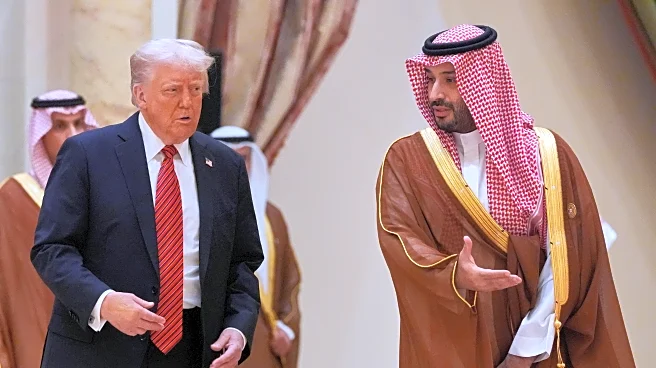What's Happening?
General Atomics Aeronautical Systems, Inc. (GA-ASI) is displaying a full-size model of its YFQ-42A Collaborative Combat Aircraft (CCA) at the Dubai Airshow. This unmanned fighter jet is designed for semi-autonomous
air-to-air operations and is part of an accelerated development schedule. The YFQ-42A is a derivative of GA-ASI's Gambit Series, which includes multiple CCA variants that can be rapidly reconfigured from a common core. This design approach allows for rapid and affordable production at scale. The YFQ-42A aims to complement human-crewed fighters like the F-35 and Next-Generation Air Dominance systems by expanding sensing, weapons capacity, and survivability in contested airspace.
Why It's Important?
The introduction of the YFQ-42A Collaborative Combat Aircraft represents a significant advancement in military aviation technology, particularly in the realm of unmanned systems. By focusing on rapid production and affordability, GA-ASI is addressing the growing demand for cost-effective defense solutions. The YFQ-42A's ability to operate alongside human-crewed fighters enhances the strategic capabilities of the U.S. Air Force, potentially increasing its effectiveness in contested environments. This development could influence defense procurement strategies and encourage further investment in unmanned systems, impacting defense contractors and military operations globally.
What's Next?
Following its display at the Dubai Airshow, the YFQ-42A model will be featured at two other major regional events: DIMDEX in Doha, Qatar, and The World Defense Show in Riyadh, Saudi Arabia, in early 2026. These exhibitions will provide further opportunities for GA-ASI to showcase its advancements in unmanned combat air vehicles to international defense stakeholders. The continued interest and exposure at these events may lead to increased collaborations and contracts with foreign governments, expanding GA-ASI's influence in the global defense market.
Beyond the Headlines
The development of the YFQ-42A highlights the growing trend towards integrating unmanned systems into traditional military operations. This shift raises ethical and operational questions about the role of autonomous technology in warfare, including issues of accountability and decision-making in combat scenarios. As unmanned systems become more prevalent, military doctrines may need to evolve to address these challenges, potentially reshaping the future of warfare.













